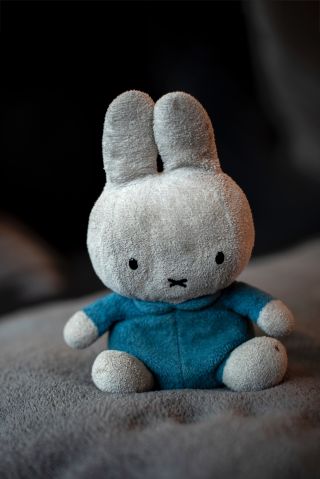Addiction
Do Adults Need Security Blankets?
Transitional objects are not just for children.
Updated June 25, 2023 Reviewed by Devon Frye
Key points
- We are used to thinking about transitional objects for children rather than adults.
- Winnicott supposed that we eventually outgrow our transitional objects.
- Many adults continue to have transitional objects representing their emotional attachments.
Donald Winnicott’s concept of “transitional object” is an important developmental concept in psychoanalysis. But we are used to thinking about it in relation to children rather than adults.
As a result of his observation of infants and toddlers, in 1951, Winnicott introduced the term to describe those blankets, soft toys, and bits of cloth to which young children frequently develop intense attachments. Winnicott explained that the object is not transitional. Rather, the object represents the infant's transition from a state of being merged with the mother to a state in which the mother is understood to be someone outside and separate.
Initially, because his needs are met most of the time, the baby feels his wishes are powerful; the mother’s attunement to the baby’s needs makes his fantasies seem like reality. As the mother’s attunement lessens, the child realizes that the mother is separate and he is dependent on her, thus being forced to accept the idea that he is not omnipotent.
The transitional object is often the first "not me" possession that really belongs to the child. This could be a real object like a blanket or a teddy bear, but other "objects," such as a melody or a book, can also serve this purpose. This object represents all components of "mothering," and it means that the child can create what he needs by himself. It enables the child to have a fantasized bond with the mother when she gradually separates for increasingly longer periods of time. The transitional object is particularly important at the time of going to sleep and as a defense against anxiety.

Winnicott theorized that such early attachments represent an essential phase of ego development leading to the establishment of a stable sense of self. There is nothing abnormal about being attached to these objects—quite the opposite. A cuddly is often used by children while going to sleep. Bedtime toys are typically an animal, such as a teddy bear, a mythical creature, or a superhero.
In a later stage of development, Winnicott posits, the child no longer needs the transitional object. He is able to distinguish between "me" and "not-me," keeping inside and outside apart and yet interrelated through the internalization of the mother. Eventually, ideally, the child makes the transition from feeling omnipotent and merged with the mother to being separate, having relationships with other people who only sometimes meet their needs, and having ways of soothing themselves when others do not meet their needs.
Winnicott supposed that if the mother's attunement is "good enough," we eventually outgrow our transitional objects and develop a capacity to be alone. But some of us are not able to be alone without anxiety.
Many adults have transitional objects. With the increase in movement away from home, and sometimes constant movement from one place to another for job opportunities or immigration, it is very common for people to carry these items with them. The “objects” may be newspapers, collections, a jacket, or a pillow. Adults may look to these objects for emotional support during transitional periods, such as assimilating to a new area, or when experiencing trauma or a significant loss.
The reality is that many adults continue to have transitional objects that bring psychological strength and assistance by representing their emotional attachments. These objects can include clothing, photographs, memorabilia, music records, documents, or a phone.
Having a transitional object as an adult can be functional or dysfunctional. For example, cigarettes can be transitional objects. The so-called “addiction” that some people have is not to nicotine, but rather to the feeling of calm and stability it creates in the smoker. In some cases, the cigarette has the same function as a security blanket.
Clearly, in that case, the transitional object is dysfunctional. On the other hand, the transitional object may be a pillow—something people can avail themselves of every night and carry with them when they travel without any negative consequences.
Whether the “objects” are functional or dysfunctional, the concept of transitional object is useful in understanding the seemingly inexplicable attachment that some adults have to things.


